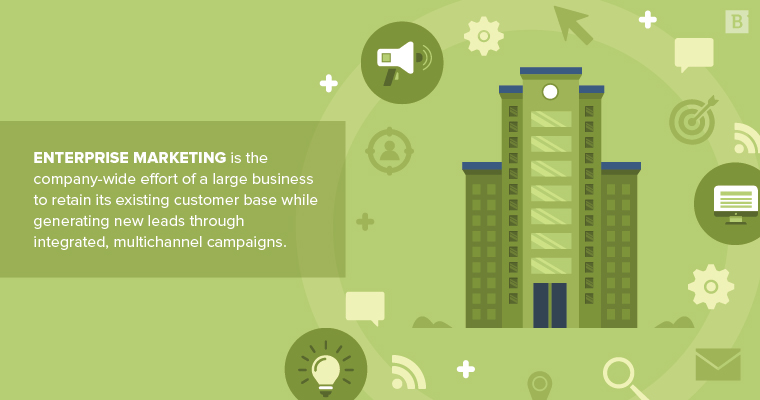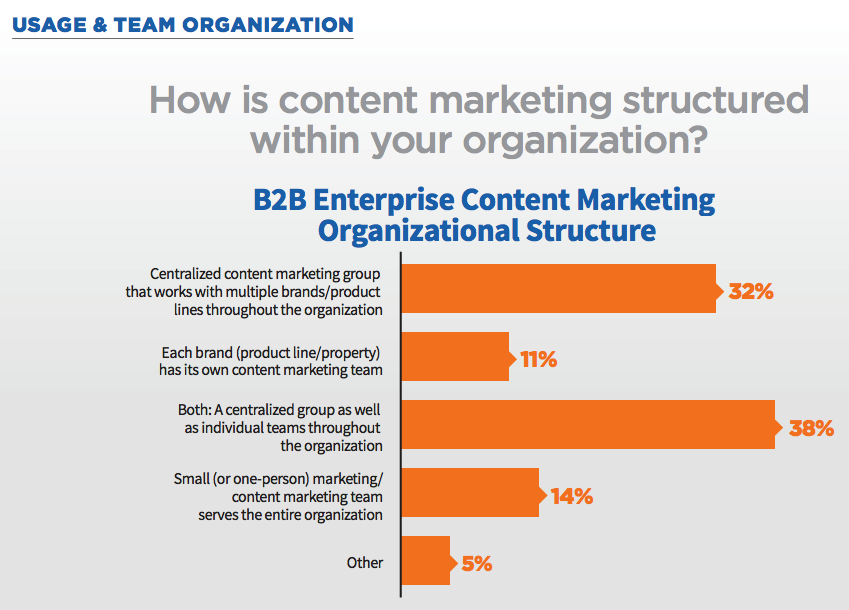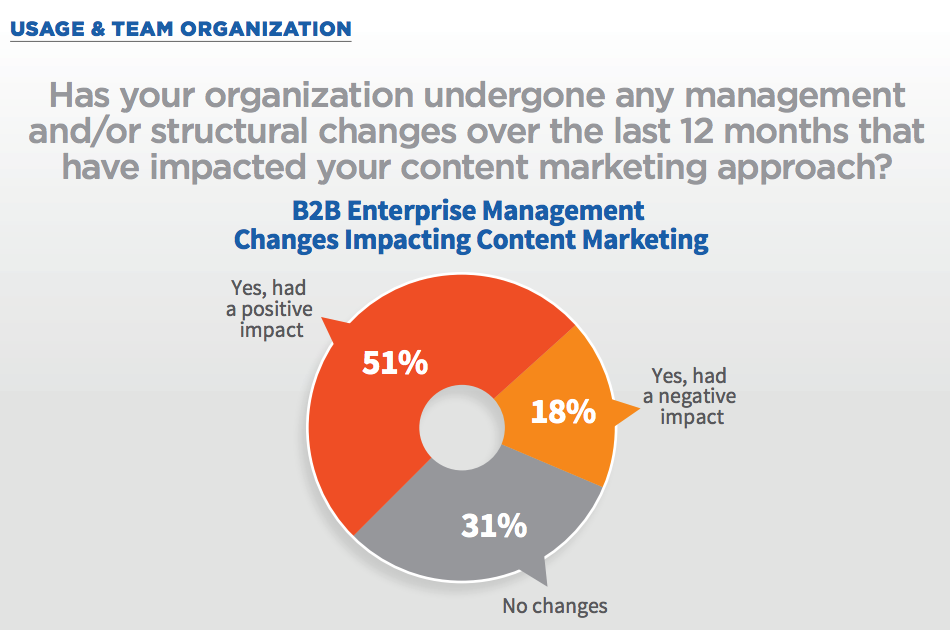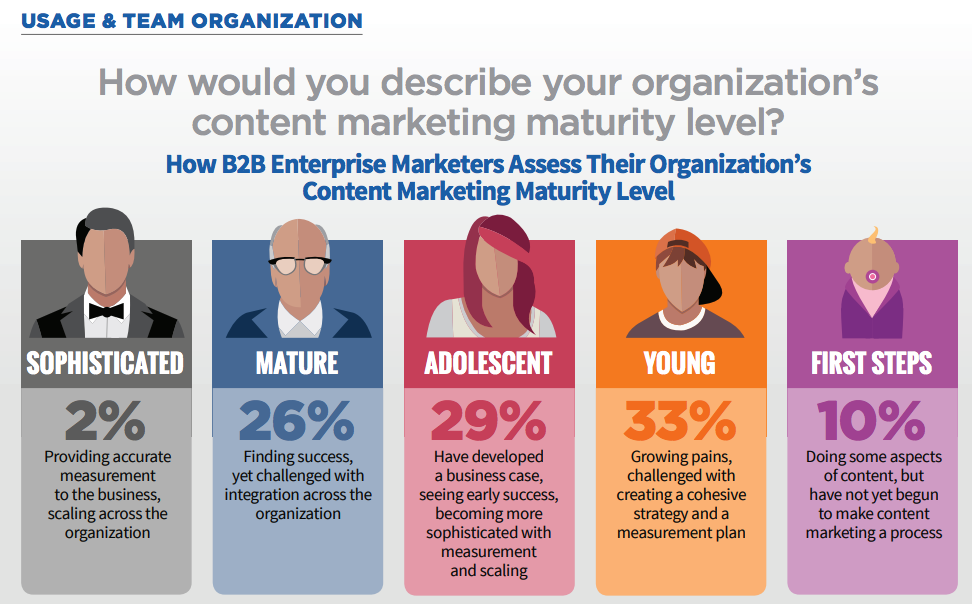What’s more aggravating than attempting, to no avail, to get three people on your team to agree on a content marketing idea?
How about getting 10? Or 20? Plus the entire sales team? And a majority of the C-suite?
Welcome to the world of enterprise marketing, where scaling content programs becomes more political, corporate silos obstruct your progress as a marketing manager, and fighting tooth and nail for greater investment is no longer a bloodsport; it’s just Tuesday.
Marketers running enterprise-level SEO, social media, and content strategies face a slew of unique challenges to their day-to-day operations (and their sanity). On the other hand, the advantages of more resources, more creative input, and more accountability that exist within a larger business offer distinct opportunities for reshaping a company’s brand and its objectives.
In the realm of enterprise marketing, the importance of a cohesive digital marketing strategy cannot be overstated. Leveraging tools like marketing automation and the Google Marketing Platform can streamline marketing efforts, making it easier to manage complex, multi-channel marketing campaigns. For enterprise companies, adopting enterprise marketing automation and enterprise marketing tools not only enhances efficiency but also drives brand awareness and customer engagement.
Creative discretion, administrative flexibility, and cross-department communication become more important when the stakes are raised. This is where the role of an enterprise marketing team becomes crucial. By integrating enterprise marketing strategies with digital marketing services, such as Google Ads and influencer marketing, businesses can reach potential customers more effectively.
So how do you run an enterprise marketing plan as efficiently as possible, and what stands in your way?

What is enterprise marketing?
Using data from the Organisation for Economic Co-operation and Development to distinguish between terminology and business type, an “enterprise” can be categorized as follows:
- Small- and medium-sized enterprise (SME): Employs fewer than 250 people.
- Large enterprise: Employs more than 250 people.
A subset of SMEs are small businesses (SMB), which, specifically in the U.S., are firms with 99 or fewer employees.
For this post, we will use the term enterprise marketing to encompass the “large enterprise” crowd (i.e., national or global entities, sizable privately held or publicly traded firms, etc.).
Enterprise marketing is the companywide marketing effort of a large business to retain its existing customer base while generating new leads through integrated, multichannel campaigns.
Marketing at an enterprise level often includes a diverse set of commercial goals, multiple forms of marketing competencies, and the leveraging of internal talent and vendor specializations. This is where enterprise marketing management plays a pivotal role, ensuring that the marketing strategy aligns with the broader business objectives.
What makes enterprise marketing more difficult than SMB or mid-sized marketing?
Because enterprise marketing is conducted on a greater scale and with numerically larger budgets devoted to its execution, both the risks and rewards are higher.
This sort of intrinsic, primal stress is a challenge in and of itself.
Whereas a mid-market firm or SMB may be new to many elements of content marketing or digital advertising, it’s likely that larger enterprises have years or decades of experience operating in a highly competitive marketing landscape. Thus, the learning curve for newer employees within large companies is expected to be shorter, and marketing programs are presumed to produce results within a certain time frame.
Smaller companies may not have experience with more of the technical, creative, and analytical nuances that shape modern marketing and move forward with a “let’s just see what happens” mentality. This would not fly at the enterprise level, where competitors operate with concrete metrics, engrained timelines, and hard KPIs to hit on a monthly and quarterly basis.
Or at least that’s what you’d think on the surface.
Content Marketing Institute actually found that enterprise marketers lag behind the average B2B marketer in nearly every indicator of content marketing success or sophistication.

One way to look at this data is to assume that because enterprise marketers have more entrenched opinions and more demanding organizational hierarchies, they may be less likely to try new things, to experiment, or develop new ideas that can’t immediately be proven successful beforehand. So the looser, “let’s test the water” mindset may actually be beneficial if only enterprise marketers were willing to dive in.
For context, 53 percent of B2B marketers rely on a small team (sometimes one person) to run marketing for the entire organization. This sort of structure is much too narrow at enterprise scale. It’s likely that enterprise marketers utilize a dedicated content marketing department, align teams of marketers with specific product lines, or use a combination of the two.

As one can imagine, the potential for overlap or inefficiencies is high.
Subscribe to
The Content Marketer
Get weekly insights, advice and opinions about all things digital marketing.
Thanks for subscribing! Keep an eye out for a Welcome email from us shortly. If you don’t see it come through, check your spam folder and mark the email as „not spam.“
The top challenges enterprise marketers face
To successfully manage an omnichannel marketing campaign across many internal brands, you must first understand common constraints you’re likely to face within a large organization.
Scaling up (or down)
Consider this pie chart:

If 69 percent of enterprise organizations have undergone a change in management within the past year, how are they expected to stay the course on existing marketing programs, meet the demands of a new boss, and appeal to the sometimes whimsical changes a new regime may dictate?
It’s obvious that, at any moment, content marketing may need to be scaled up or down as the company grows or retracts and as executives bring in fresh blood with different ideas.
Vendor relationship management
Enterprise marketers are apt to keep some portion of strategy, execution, and oversight in-house; however, to produce content at scale, it’s going to take outsourcing in some capacity.
And with outsourcing inevitably comes a loss of control (to a degree) over direction and creative ideation, as well as the task of managing the day-to-day relationships of several vendor programs and their respective personalities.
Misaligned department objectives and quotas
If the CEO gives the sales department a directive to increase new subscriptions by 10% next quarter, but the marketing team receives a potentially contradictory message, both departments suffer.
In this example, perhaps the CMO instructed the marketing team to focus on repeat customers, not ones that are necessarily scored as new leads.
Though the objective is obviously to move forward with higher revenue as a company, each department may interpret disparate agendas differently, which will trickle down into content creation decisions and high-level strategy discussions.
Resource allocation and job responsibilities
How much of the work do vendors do, and how much do you do? Do you have a dedicated person that focuses just on analytics? Does that overlap with the monthly metrics reports you’re already producing?
These questions and more should be ironed out before ramping up marketing efforts.
Executive buy-in
Some executives may be risk-averse while others are open to new tactics. How do you placate enough of the C-suite to win approval of your budget requests and annual content initiatives?
For an SMB, that could be as simple as walking over to the CEO Craig’s desk and verbally asking for five minutes of his time. But in the corporate world, this sort of transaction could take months to organize and even longer to get approved.
Siloed communication
If all marketing requests have to run through the CMO, who speaks infrequently with the CSO, how do you ensure you’re aligned with the sales department?
These sorts of communication barriers are rampant at the enterprise level, where internal squabbles and teamwide politics can hold sway over quick decision-making.
Strategy adjustments
If the first three months of your content marketing venture aren’t panning out as intended, how easy is it to pivot to a new strategy? Do you have the authority to move resources from an unsuccessful channel to one that’s taking off better than expected?
These decisions may be at the sole discretion of a marketing director within a mid-tier firm, but larger organizations tend to splinter jurisdiction more broadly, making your strategy rigid and ill-suited to adapt to market changes.
Investment, support, creativity: When company size is a benefit
It’s definitely not all headaches and bureaucracy.
Enterprise marketing confers numerous benefits that smaller organizations could only dream of.
These broadly come down to more money, more internal and vendor support, and more access to professional creatives.
B2B enterprise marketers aren’t actually as ahead of the pack as one would think, as this chart shows:

Just 28% would be considered “sophisticated” or “mature.” This is likely due to content marketing being a new-ish practice that the typical enterprise has not yet mastered. On the bright side, however, is the fact that large firms have the resources to hire internal talent or outsource to those who actually are “sophisticated” or “mature” in their content proficiency.
And with this financial capability comes the advantage of putting cohesive plans in place to get the most out of internal and external resources and allowing channel experts to chime in on holistic strategies that extend beyond their respective fields. In total, you’re able to funnel up the best ideas and mold a marketing program accordingly.
Making it work: Scalability, communication, campaign management and sales alignment
But to truly unite sales and marketing teams, make decisions backed by data, and manage people and ideas in a constructive way, you still need a model for making it all work together in cohesion. (Please don’t make me use the word synergy .)
More than anything, enterprise marketing requires communication and coordination. It requires speaking the same language as teammates, vendors, and other departments.
And in a perfect world, all marketing activities are perfectly aligned with business goals, as each channel serves its purpose in qualifying prospects, nurturing sales-ready leads, and engaging with the world at large in a meaningful way.
In what ways do you drive content marketing success within your organization?
Need help?
to truly unite sales and marketing teams, to make decisions backed by data, to manage people and ideas in a constructive way, you still need a model for making it all work together in cohesion. (Please don’t make me use the word synergy.)
More than anything, enterprise marketing requires communication and coordination. It requires speaking the same language as teammates, vendors and other departments.
And in a perfect world, all marketing activities are perfectly aligned with business goals, as each channel serves its purpose in qualifying prospects, nurturing sales-ready leads and engaging with the world at large in a meaningful way.
In what ways to do you drive content marketing success within your organization?
Need help?
Editor’s Note: Updated April 2024.





